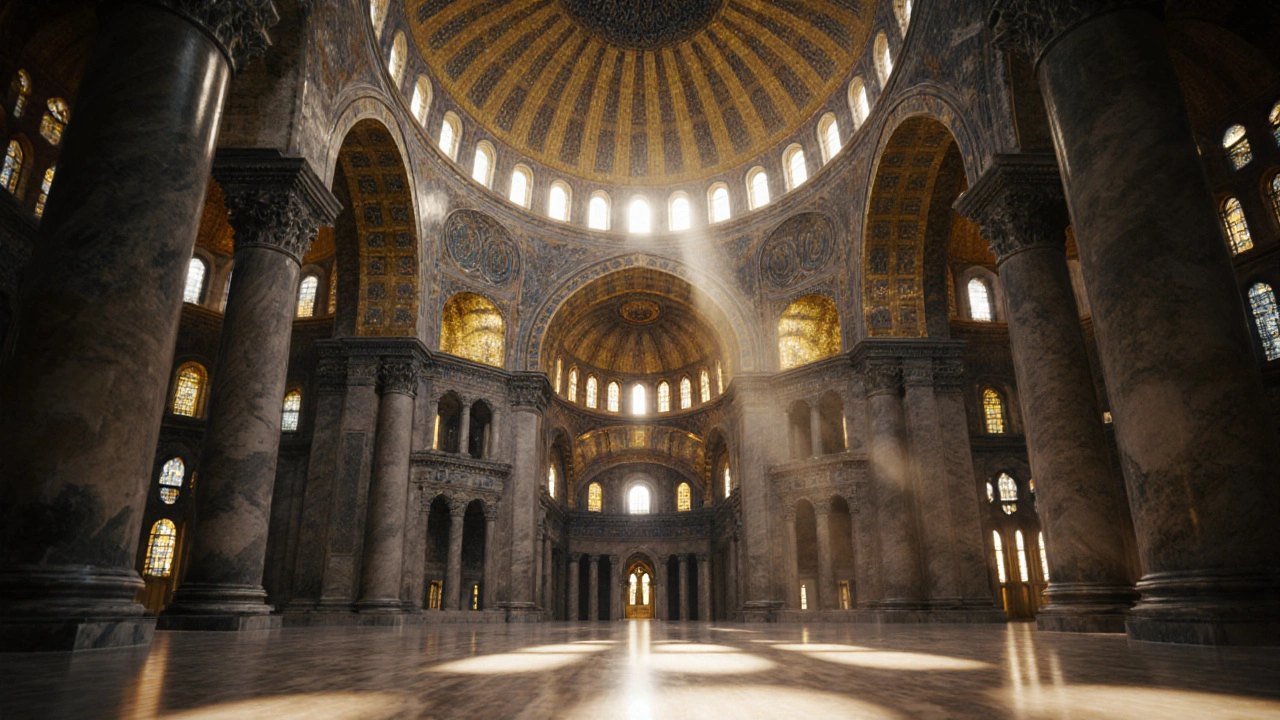Byzantine architecture used light, domes, and gold mosaics not just for beauty, but to create sacred spaces where heaven felt close. Its spiritual design still moves people today.
Domed Churches: History, Design, and Spiritual Architecture
When you think of a domed church, a sacred building crowned with a rounded vaulted roof, often symbolizing heaven or divine presence. Also known as church with a cupola, it combines structural ingenuity with deep spiritual meaning. These aren’t just roofs—they’re statements. From the early Christian basilicas to the grand cathedrals of Eastern Europe, domed churches have carried faith across empires, cultures, and centuries.
The Byzantine architecture, a style that emerged from the Eastern Roman Empire, known for its massive domes, mosaics, and centralized floor plans turned the dome into a signature. Think Hagia Sophia in Istanbul—its massive central dome seemed to float, supported by pendentives, a revolutionary engineering trick that let builders lift weight higher than ever before. This design didn’t just impress—it inspired. It became the blueprint for Orthodox churches from Russia to Serbia, and even influenced later Western cathedrals. Meanwhile, the Roman architecture, the foundational system of arches, concrete, and vaults developed by ancient Romans to build aqueducts, baths, and temples gave domed churches their bones. The Pantheon’s concrete dome, built nearly 2,000 years ago, proved that stone and mortar could span vast spaces without internal supports. Later builders copied that idea, turning religious spaces into awe-inspiring vaults of light and space.
Domed churches aren’t just about old techniques—they’re about how form follows faith. The dome pulls your eyes upward, away from the earth, toward something higher. It’s no accident that so many of these buildings sit at the center of cities, visible from miles away. They’re landmarks of devotion, not just architecture. In Italy, you’ll find domed churches in Florence and Rome, often paired with Renaissance symmetry. In Russia, onion domes glow gold under the sun, each curve a reflection of spiritual longing. Even today, modern religious buildings borrow the dome’s shape—not to copy the past, but to carry its weight.
What you’ll find in the posts below are real examples, deep dives into how these structures were built, and how their design choices still echo in today’s sacred spaces. No fluff. Just the stories behind the stone, the glass, and the sky-reaching curves that have shaped worship for generations.

